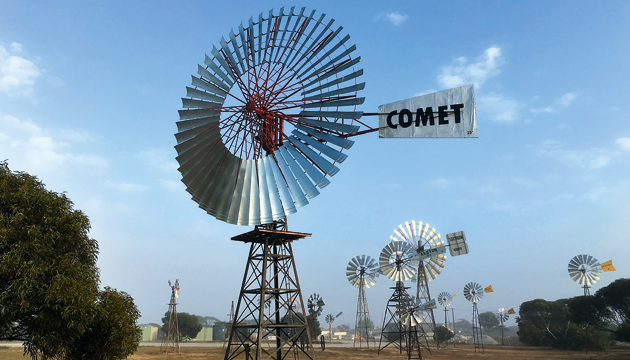The unofficial symbol of inland Australia, windmills have been using green energy to bring water to otherwise arid land since the 1870s.
Story by John Dunn
The tiny South Australian town of Penong, population 75, is perched on the edge of the Nullarbor – an Eyre Highway pit stop on the way to or from Perth. Water has always been short here, so windmills – almost one for every home – have dominated the skyline for years as they have pumped supplies up from the Anjutabie Basin.
Many are now being replaced by solar pumps, but their place in the history of this area is being preserved by a group of locals known as the Windmill Warriors. Led by Bob Oats and Tim Hardy, the group has established a windmill museum. “They’re a vital part of our district’s history and we want to preserve the connection the community has with them and enable future generations to know how we survived in the early days,” says Bob, who has farmed sheep and wheat but now runs a trucking business.
The Windmill Warriors have built a windmill park by restoring about 20 battered and broken mills collected from farms and houses where they were unused and rusting away. “They range from an old timber William Riddle mill to a massive Comet once used by the railways to pump water for steam trains,” says Tim, who does much of the initial repair work in the rural supplies firm he owns. “We’re claiming the Comet is the biggest in Australia. It took us 2000 man-hours, 113 bags of cement hand-mixed for the footings – and 110 empty beer cans.”
The museum opened late last year and volunteers are already thrilled by its impact. “In the first four months we had almost 11,000 visitors,” Bob says. “Almost everyone crossing the continent stops to have a look. Then they drive on with an appreciation of just how valuable these whirling workhorses have been to our inland development.”
This story excerpt is from Issue #113
Outback Magazine: June/July 2017










